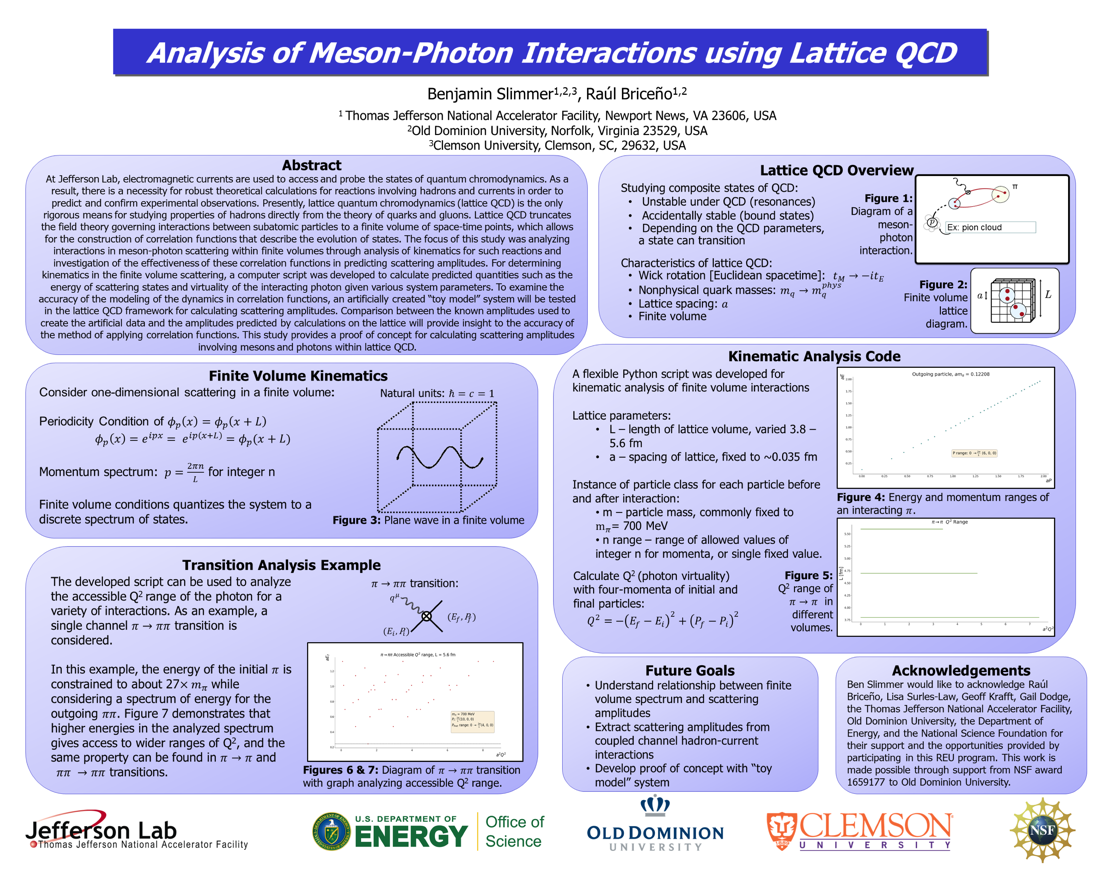Undergraduate Research at Jefferson Lab
Analysis of Meson-Photon Interactions using Lattice QCD
Student: Ben Slimmer
School: Clemson University
Mentored By: Raúl Briceño
At Jefferson Lab, electromagnetic currents are used to access and probe the states of quantum chromodynamics. As a result, there is a necessity for robust theoretical calculations for reactions involving hadrons and currents in order to predict and confirm experimental observations. Presently, lattice quantum chromodynamics (lattice QCD) is the only rigorous means for studying properties of hadrons directly from the theory of quarks and gluons. Lattice QCD truncates the field theory governing interactions between subatomic particles to a finite volume of space-time points, which allows for the construction of correlation functions that describe the evolution of states. The focus of this study was on analyzing interactions in meson-photon scattering within finite volumes through analysis of kinematics for such reactions and investigation of the effectiveness of these correlation functions in predicting scattering amplitudes. For determining kinematics in the finite volume scattering, a computer script was developed to calculate predicted quantities such as the energy of scattering states and virtuality of the interacting photon given various system parameters. To examine the accuracy of the modeling of the dynamics in correlation functions, an artificially created "toy model" system will be tested in the lattice QCD framework for calculating scattering amplitudes. Comparison between the known amplitudes used to create the artificial data and the amplitudes predicted by calculations on the lattice will provide insight to the accuracy of the method of applying correlation functions. This study provides a proof of concept for calculating scattering amplitudes involving mesons and photons within lattice QCD.

Citation and linking information
For questions about this page, please contact Education Web Administrator.
